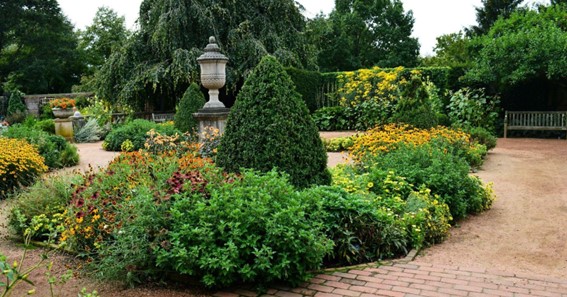When referring to the design and building of outdoor areas, the term “hardscaping” refers to the use of hard materials. Walkways, patios, retaining walls, and fences are all examples of possible components that might be included in this category. The term “landscaping,” which refers to the practice of designing an outdoor space with the help of plants and other natural elements, is sometimes used in combination with the term “hardscaping,” which refers to the practice of designing an attractive and practical outdoor area.
Why Should You Hardscape?
The ability of hardscaping (https://en.wikipedia.org/wiki/Hardscape) to provide structure and order to an outdoor area is among the most significant advantages offered by this landscaping technique. Walkways, for instance, may provide people a distinct route on which to travel, while retaining walls, on the other hand, can assist in delineating various sections of the garden or yard. Hardscaping may also be utilized to build practical spaces, such as outdoor kitchens or fire pits, that can be used for a variety of purposes, including entertaining guests or just unwinding after a long day.
The value of a property may be increased in both its functional and aesthetic aspects by the inclusion of hardscaping features. The usage of a variety of materials, such as stone, brick, or concrete, may result in the creation of a design that is consistent and appealing to the eye. Hardscaping may also be utilized to create areas of interest, such as water features or sculptures, which can lend a touch of whimsy to a garden or yard. These areas of interest can be created using a variety of materials.
When planning a project that involves hardscaping, there are a few important factors to keep in mind at all times. To begin, it’s essential to give some thought to the space’s overarching style as well as its aesthetic. This will assist in ensuring that the pieces of hardscaping blend in smoothly with the rest of the landscape.
Second, it is essential to take into account the practicability of the area and to plan the layout of the hardscaping components in such a manner as to cater to the requirements of the individuals who will be making use of the area. Give some thought to the long-term upkeep of the hardscaping features, since these elements will need to be cleaned on a regular basis and may eventually need repairs.
In general, the addition of hardscaping to any outdoor area may be a worthwhile addition, since it can provide both practical and aesthetic advantages. It is possible to create an outdoor environment that is coherent, useful, and will be enjoyed for many years to come by giving careful consideration to the design and materials used to construct the place.
Is Landscaping Really Worth The Amount?
The process of planning with a company that installs new lawns and taking care of the outside areas of a property, including the plants, trees, and any other natural components, is referred to as landscaping. It is possible for it to be a difficult and time-consuming process, but it has the potential to provide a property with a number of major advantages.
One of the key advantages of landscaping is that it may make a property seem better in general. This is one of the many benefits of landscaping. It is possible to create a beautiful and welcoming outdoor environment that will be loved by everyone who sees it by adding natural features such as plants, trees, and other parts of the natural world. Landscaping may also assist to raise the value of a house. This is because attractive and well-kept outside areas are often seen as an indication of a home that has been well-maintained.
In addition to the aesthetic value it adds to a property, landscape design may also provide functional value. For instance, strategically placing trees and plants on a property may give shade and protection from the sun, making it more bearable to be on the property when the temperature is high. Landscaping may also be utilized to build practical spaces such as vegetable gardens, which can provide residents with fresh food. These types of areas can be used to give a source of income.
One other advantage of landscaping is the potential for it to have a favorable effect on the surrounding natural environment. It is possible to lower the amount of carbon dioxide (https://www.britannica.com/science/carbon-dioxide) in the air and enhance the quality of the air by planting trees and other types of plants. In addition to providing a home for many species of flora and fauna, landscaping plays an important role in preventing soil loss and erosion respectively.
In spite of the many advantages that can be gained from landscaping, it is essential to bear in mind that it does call for ongoing care. This may include activities such as watering, trimming, and fertilizing plants, as well as clearing away weeds and other garbage. However, with the right maintenance and attention, a property with attractive landscaping may provide its owners years of satisfaction and financial reward.
In general, landscaping may provide a lot of benefits to a property, including improvements to the property’s look and value, as well as advantages that are both practical and beneficial to the environment. Homeowners may create an outside environment that is attractive and practical via careful design of their landscapes and regular maintenance of those landscapes.
